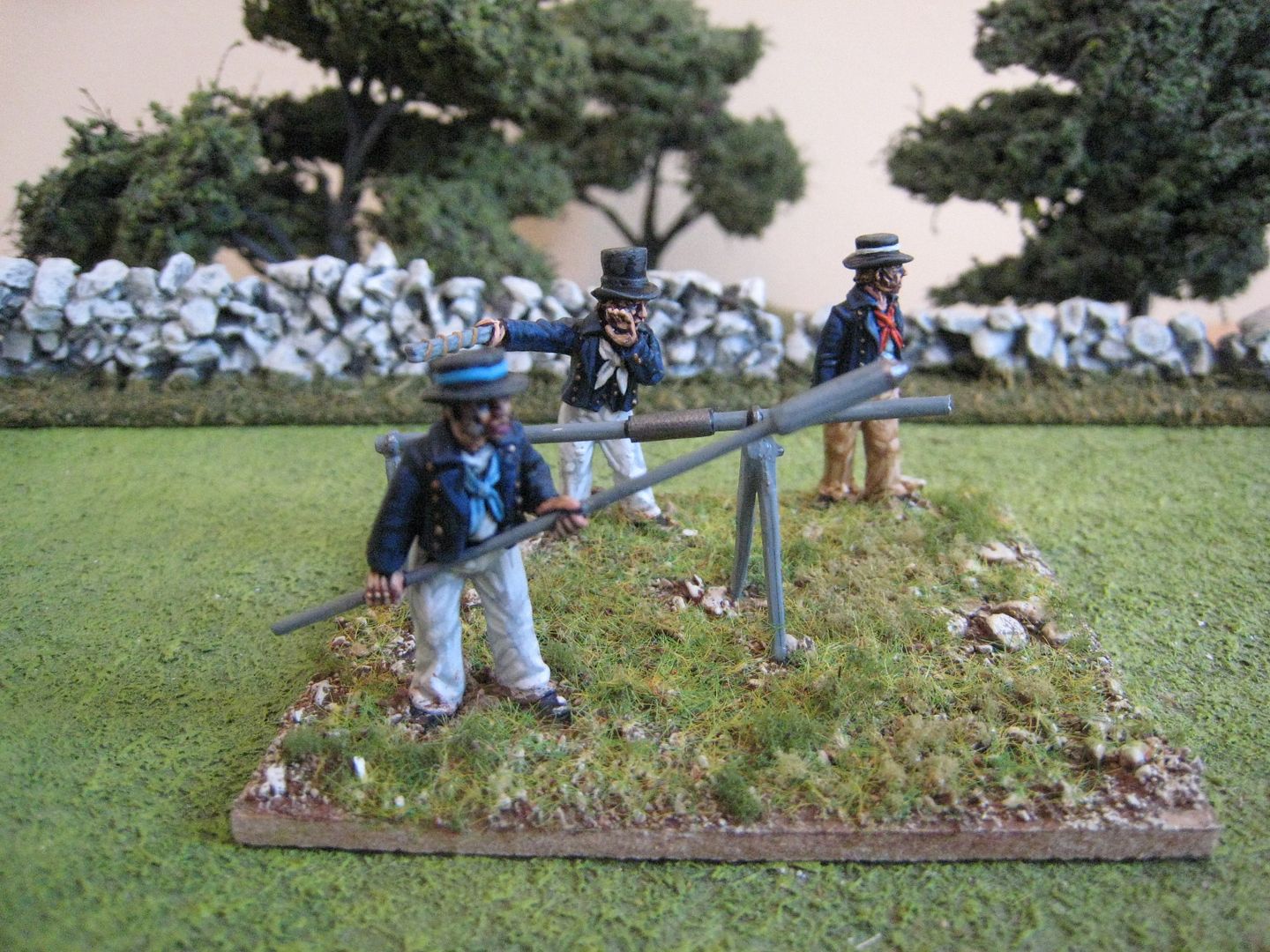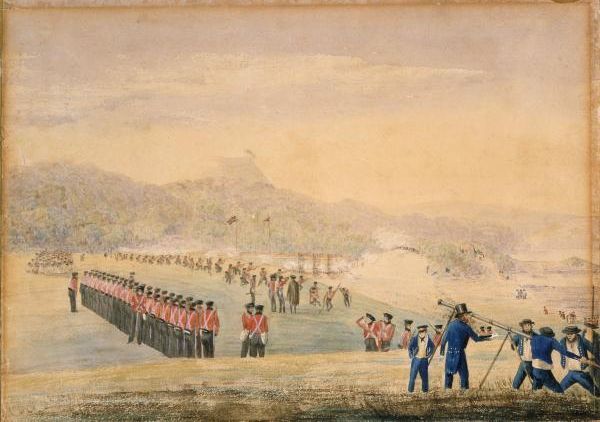
The defeat of Honi Heke by "loyal" Maori at Te Ahuahu gave the British an excellent opportunity to move against Chief Kawiti, the other ringleader of Maori resistance, at his pa at Ohaeawai. By this time, Colonel Hulme had been replaced as c-in-c of all British troops in New Zealand by Colonel Henry Despard of the 99th Foot. The British arrived at Ohaeawai on 24 June 1840 and Despard, with a force of 615 men and 4 cannon, immediately commenced a bombardment with his artillery in an attempt to create a breach in the pa's walls. 6 days later his 6- and 12-pounders had failed to have any impact, so Despard ordered up a 32-pounder from the ships standing by offshore. When the gun opened fire Kawiti launched a Sally against one of the artillery batteries and Despard responded by sending 250 men to assault the pa itself. These men consisted of flank companies from the 58th Foot and the 99th Foot, plus some sailors, Auckland Militia and other volunteers. 100 Maori were in the pa at the time, but the British were hurled back with heavy loss. The British managed to advance close to the pa under cover and then "50 paces" away charged. At that point the Maori fired a devastating volley, described by one soldier as "the opening of the doors of a monstrous furnace". Struggling to pull down the fences that formed the pa's outer defences, the British then took fire from all sides from Maori who the soldiers couldn't even see. Eventually, after about 10 minutes, the retreat was sounded. Almost half the assault party was killed or wounded in the attack.
Major Cyprian Bridge, who having witnessed the action at Puketutu should have been aware of Maori confidence in battle, wrote that after the assault the men were "tired and dispirited and disgusted beyond expression at having been defeated by a mob of savages and with such fearful cost too." Despard had assaulted a well-fortified pa without waiting for his artillery to create a clear breach, and that was clearly a grave mistake (apparently various officers objected to his plan to launch a frontal assault, many of whom subsequently died in the attempt). However, what he probably had not fully appreciated was just how skilfully the Maori had prepared the pa for defence, which included various innovations. The two palisades provided obstacles which would hold up attacking infantry, and behind that was a trench in which Maori musketmen could fire from cover. Flanking-angles were built into the trench system to ensure that attackers would be caught in fire from as many sides as possible; those British soldiers who made it through the first palisade found themselves in enfilade fire and didn't get much further. The garrison was protected from artillery bombardment by underground pits and bunkers. Despard had assumed that his artillery, which fired over 400 rounds, had pulverised and demoralised the Maori, but that assumption was completely wrong as the garrison was untouched. In fact, Maori losses for the entire battle are thought to have been fewer than 10 men. Ohaeawai was a disaster for the British and there was no further fighting for 5 months.
The figures here are a Royal Navy rocket and crew from Empress Miniatures and a pack of 4 sailors from Mutineer Miniatures' Indian Mutiny range. The latter are a bit chunkier than the former, but at present the Empress range has no seamen and the Mutineer figures make an acceptable stand-in and I have added a photo of a Mutineer figure next to an Empress one. The uniform of the sailors is defintely more India than Australasia - for example, the army did not provide neck shades for troops in service in NZ; but the navy may have done, I suppose - who knows? I suspect that sailors will feature in any new releases in this range, together with guns and crews. The rocket team is an excellent group of sculpts. I don't think that any rockets were deployed at Ohaeawai but they were present at Puketutu (as evidenced by the painting below by Cyprian Bridge). Heke's wife, Hariata, noted that the rockets made a lot of noise but ultimately didn't do much damage. I think I read that somewhere about British rockets in the Napoleonic Wars...
7 figures. Painted April 2011.




5 comments:
These look just great! Fantastic back story as well.
Cheers
Christopher
A nice addition to the collection, soooo when are you going to scratch build a Pa?
cheers
Matt
Well Giles, I think it's safe to say you're finally getting the hang of this painting lark :)
Lovely stuff again and nice to get a little history attached of a little know subject (for me anyway).
Looking forward to more.
Andy
Great stuff, Giles.
The British got their own back at Ruapekapeka, when they deployed Coehorn mortars. The Maori were great engineers, and had developed rifle pits which were proof against direct fire solid shot from muzzle loading smooth bores, they were not expecting indirect fire from mortars, and certainly not shell. While the defenders were sheltering out the back of the Pa, the attackers (including Government Maori under Tamati Waka Nene) swiftly took possession, the battle changing to a desperate attempt by Kawhiti's men to recapture their own Pa, which was unsuccessful. The northern war finished soon after with Heke's submission to the government.
Post a Comment